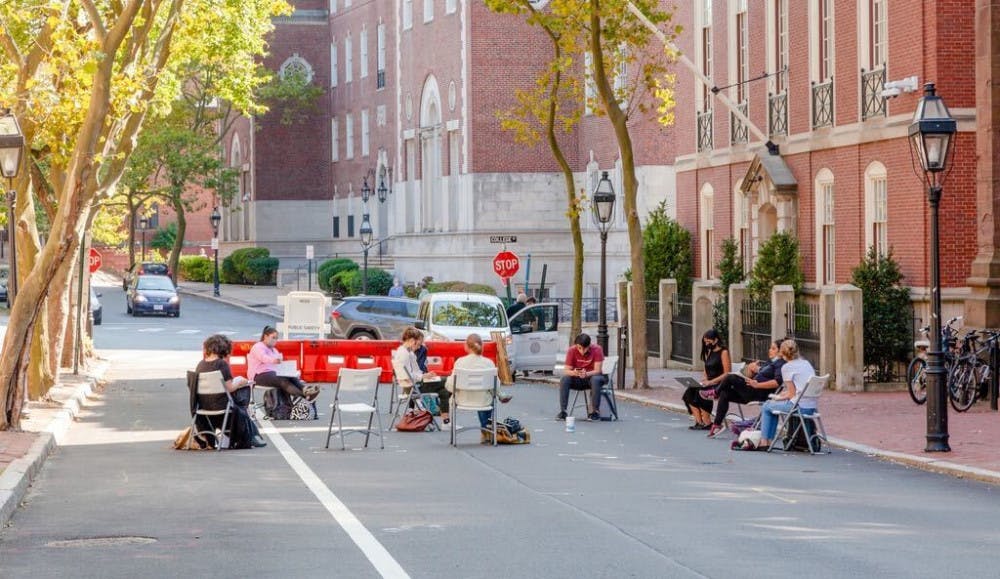Outside of buildings at the Rhode Island School of Design, large white tents are spread across various corners of campus. Under these tents, groups of students are seen drawing, sketching and painting while sitting six feet apart from each other. These outdoor arrangements are the latest classrooms that RISD has created to help professors who are teaching in person during the COVID-19 pandemic.
The outdoor classrooms can accommodate around 16 students. RISD has set up these tents across Moore Terrace, Benefit Street and anywhere else the school can find room.
Lecturing outdoors is not mandatory, but many instructors, such as Leonard Long, senior critic and instructor of illustration courses, have opted to take advantage of these provisions until the weather forces them back inside.
Long said he likes teaching outdoors because his classes get to enjoy the warm weather. Although he has noted a multitude of distractions — pedestrians, traffic and bugs — he thinks it is a good experience for his students to be placed outside of their comfort zones.
“It helps students realize the importance of maintaining their focus regardless of the environment they’re in," Long said. "Artists tend to rely on the comforts of the studio to do their work. Our new reality makes it necessary for artists to be much more flexible in their need to produce work only in the studio."
Mandatory mask-wearing in these outdoor classes can pose unique challenges to artists, noted Owen Rival, a RISD senior and teaching assistant for Long’s class. Specifically, he said that the difficulty of reading facial expressions beneath a mask is an issue when painting in a pandemic.
“A lot of the ways we judge if a student is understanding the material is based off their facial expressions and how they look, whether or not they look confused. With face masks, we can’t really see that, so it’s a little harder to judge. We are trying to find ways to overcome that,” Rival said.
Rival also noted that wearing masks is tiring during classes, some of which can be six hours long. But classes outside make it easier for students to find personal space where they can take off their masks without worrying about risking infection.
Jean Blackburn, a senior faculty member in the illustration department, discussed other challenges in teaching outdoors, such as the need to raise her voice, unsatisfactory lighting and the difficulty in showing students their errors without getting too close. Blackburn has adapted an inventive solution to some of these problems: She purchased a laser pointer.
“I can stand a distance away from the students and point to their drawings, but also point things off into space that are a bit of a distance away,” Blackburn said.
Izzy Hettmansperger, a RISD sophomore in Blackburn’s class, mentioned that outdoor learning has encouraged her to approach her art in a new way.
“There’s a lot more going on to draw rather than a traditional classroom setting since you’re only looking at the indoor space. I wouldn’t be drawing buildings the way that I am now,” said Hettmansperger.
Outdoor art is not an entirely new practice for RISD students. Susan Doyle, department head of illustration, noted that RISD classes typically encourage students to work outside. She said that in the past, having students change their environments has only helped their learning progress.
“In the fall, we encourage our students to draw and paint outside depending on what the assignment is because that’s part of learning how to translate from full immersion into an environment, and then create art from it,” Doyle said.
Still, when the weather gets colder and the tents are stowed away, all of the instructors agree that teaching indoors will present its own obstacles.

Rebecca Carcieri is an arts & culture editor. She is a senior from Warwick, Rhode Island studying political science.





